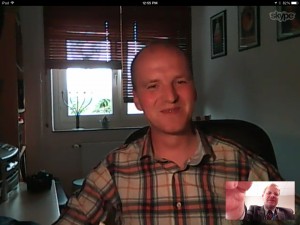 Before I began my career in health care, I worked for 14 years in political and government jobs at the local, state and national level. The last of those was as press secretary for former U.S. Rep. Gil Gutknecht. I had helped Gil set up his first Web site, but when I left in 2000 the Internet hadn’t yet gotten to be a big thing in politics. And social media platforms like Facebook and Twitter were nonexistent.
Before I began my career in health care, I worked for 14 years in political and government jobs at the local, state and national level. The last of those was as press secretary for former U.S. Rep. Gil Gutknecht. I had helped Gil set up his first Web site, but when I left in 2000 the Internet hadn’t yet gotten to be a big thing in politics. And social media platforms like Facebook and Twitter were nonexistent.
In the post-9/11 era and in the aftermath of the anthrax scare, email took over as the highest impact means for citizens to communicate with their members of Congress. This morning Gil passed along an interesting article indicating that social channels are having more impact than email campaigns. Here’s an excerpt:
Advocacy campaigns have relied heavily on email for more than two decades, but a recent survey shows that a handful of well-conceived comments on social media may be just as effective as thousands of emails.
In a poll of House and Senate offices by the Congressional Management Foundation, three quarters of senior staff said that between one and 30 comments on social media platforms like Facebook and Twitter were enough to grab their attention on an issue. Thirty-five percent said that fewer than 10 comments were enough.
“The contrast is shocking between Twitter volume and email volume,” CMF President and CEO Brad Fitch said.
The article, which was published just before the last election, goes on to explore some of the reasons for the higher relative impact of social compared with email.
Having worked in a congressional office, here’s what I think:
Even if an advocacy group can generate messages from several hundred constituents, those messages feel less authentic to the congressional staff than social posts do.
If I send my congressman an email, a staffer in his office reads it and will likely categorize it along with others in a report to the congressman. If I’m one of a handful of people sharing the same concern or idea, it’s not going to register.
But if mine is one of thousands, and the language of the messages are similar, it feels more like astroturf than grassroots.
An email message is the end, while a social post is a beginning. Organized campaigns can get constituents to send email messages, but those messages are invisible to the broader public.
But when you or I comment on Facebook or Twitter, we’re not just addressing our elected officials: we’re sharing sentiments with our friends and connections, too. Instead of going into the email black hole, the messages are out in the wild, and able to influence others.
Members of Congress pay attention to public opinion, but they can tell when activists are juicing the numbers.
So if you have something to say to your government officials, tweet it in your own words. It might encourage others to speak up. And over time, that can make an impact.
It’s not about flash mobs and splash. It’s about authentic involvement.
 Before I began my career in health care, I worked for 14 years in political and government jobs at the local, state and national level. The last of those was as press secretary for former U.S. Rep.
Before I began my career in health care, I worked for 14 years in political and government jobs at the local, state and national level. The last of those was as press secretary for former U.S. Rep. 
